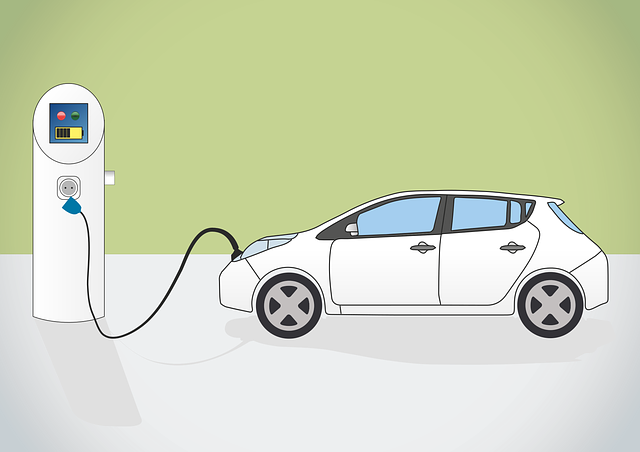India is renowned for its rich cultural and heritage sites, attracting millions of domestic and international tourists each year. As the world transitions to cleaner and more sustainable modes of transportation, electric vehicles (EVs) have emerged as a promising solution to reduce carbon emissions and promote environmental sustainability. This article explores the importance of electric vehicle charging infrastructure for cultural and heritage sites in India, highlighting the benefits it brings to visitors, site management, and the preservation of these precious landmarks.
- Environmental Sustainability
Electric vehicle charging infrastructure promotes environmental sustainability by encouraging the use of zero-emission vehicles at cultural and heritage sites. As EVs do not emit tailpipe emissions, their presence helps to reduce air pollution, minimize noise pollution, and preserve the ecological integrity of these sites. By providing charging facilities, cultural and heritage sites can actively contribute to India’s efforts to combat climate change and achieve its sustainable development goals.
- Visitor Convenience and Accessibility
Installing electric vehicle charging infrastructure at cultural and heritage sites enhances visitor convenience and accessibility. EV charging stations allow EV owners to easily recharge their vehicles while exploring these sites, eliminating concerns about range anxiety and the availability of charging facilities. This convenience encourages more visitors to consider electric vehicles as a viable transportation option when planning their trips to cultural and heritage sites, leading to increased visitor numbers and improved overall visitor experiences.

- Extended Visitor Stay and Local Economic Impact
The availability of electric vehicle charging infrastructure at cultural and heritage sites can result in extended visitor stays and increased spending in local economies. EV owners may choose to spend additional time at these sites to charge their vehicles, leading to a more immersive experience and the opportunity to explore surrounding areas. This extended visitation benefits local businesses, such as restaurants, hotels, and souvenir shops, as visitors have more time and resources to engage in local economic activities.
- Preserving Site Integrity and Noise Reduction
Traditional fossil fuel vehicles contribute to air pollution, noise pollution, and potential damage to the physical infrastructure of cultural and heritage sites. Electric vehicles, on the other hand, produce zero tailpipe emissions and operate quietly, reducing both environmental and acoustic disturbances. By promoting the use of electric vehicles through charging infrastructure, cultural and heritage sites can mitigate the negative impact of transportation on their structures and surroundings, ensuring the long-term preservation and integrity of these precious landmarks.
- Educational Opportunities and Awareness
Electric vehicle charging infrastructure at cultural and heritage sites provides an opportunity to educate visitors about sustainable transportation and environmental conservation. Charging stations can serve as educational hubs, providing information about the benefits of electric vehicles, renewable energy sources, and the importance of sustainable practices in preserving cultural and natural heritage. This increased awareness fosters a sense of environmental responsibility among visitors, encouraging them to adopt sustainable habits and contribute to a more sustainable future.

Challenges and Considerations
- Infrastructure Planning and Integration
Integrating electric vehicle charging infrastructure into existing cultural and heritage sites requires careful planning and consideration. Site managers must evaluate the available space, electrical capacity, and infrastructure requirements for installing charging stations. Collaborations with electric vehicle manufacturers, charging infrastructure providers, and relevant government agencies are crucial for the successful integration of charging infrastructure without compromising the integrity or visual aesthetics of the sites.
- Grid Capacity and Power Supply
Cultural and heritage sites may have limitations on their electrical grid capacity, particularly in remote or historically significant locations. Upgrading grid infrastructure and ensuring a reliable power supply to charging stations is essential to meet the demand of electric vehicle charging. Collaborative efforts between site management, local utilities, and government entities are necessary to address these challenges and ensure a consistent power supply for charging infrastructure.
- Heritage Conservation Considerations
When installing electric vehicle charging infrastructure, site managers must consider the conservation and preservation requirements of cultural and heritage sites. Careful placement and design of charging stations are necessary to minimize visual impact and ensure they are harmoniously integrated into the site’s architectural and historical context. Attention should be given to protect the structural integrity and authenticity of the site while providing sustainable transportation solutions.
- Maintenance and Safety
Proper maintenance and safety protocols are essential for the reliable and safe operation of electric vehicle charging infrastructure. Site management must establish regular maintenance schedules, monitor the charging equipment, and address any technical issues promptly. Safety measures, including clear signage, adequate lighting, and proper electrical grounding, should be implemented to ensure the well-being of visitors and the protection of the cultural and heritage sites.
Conclusion
Electric vehicle charging infrastructure plays a significant role in promoting sustainable transportation practices at cultural and heritage sites in India. By embracing electric mobility, these sites can reduce carbon emissions, enhance visitor experiences, and contribute to environmental sustainability. However, challenges related to infrastructure planning, grid capacity, heritage conservation, and maintenance must be addressed to ensure the successful integration of charging infrastructure without compromising the integrity of the sites.
By embracing electric vehicles and providing charging facilities, cultural and heritage sites in India can lead by example, showcasing the harmonious coexistence of modern technology and cultural preservation while inspiring visitors to adopt sustainable transportation practices.

